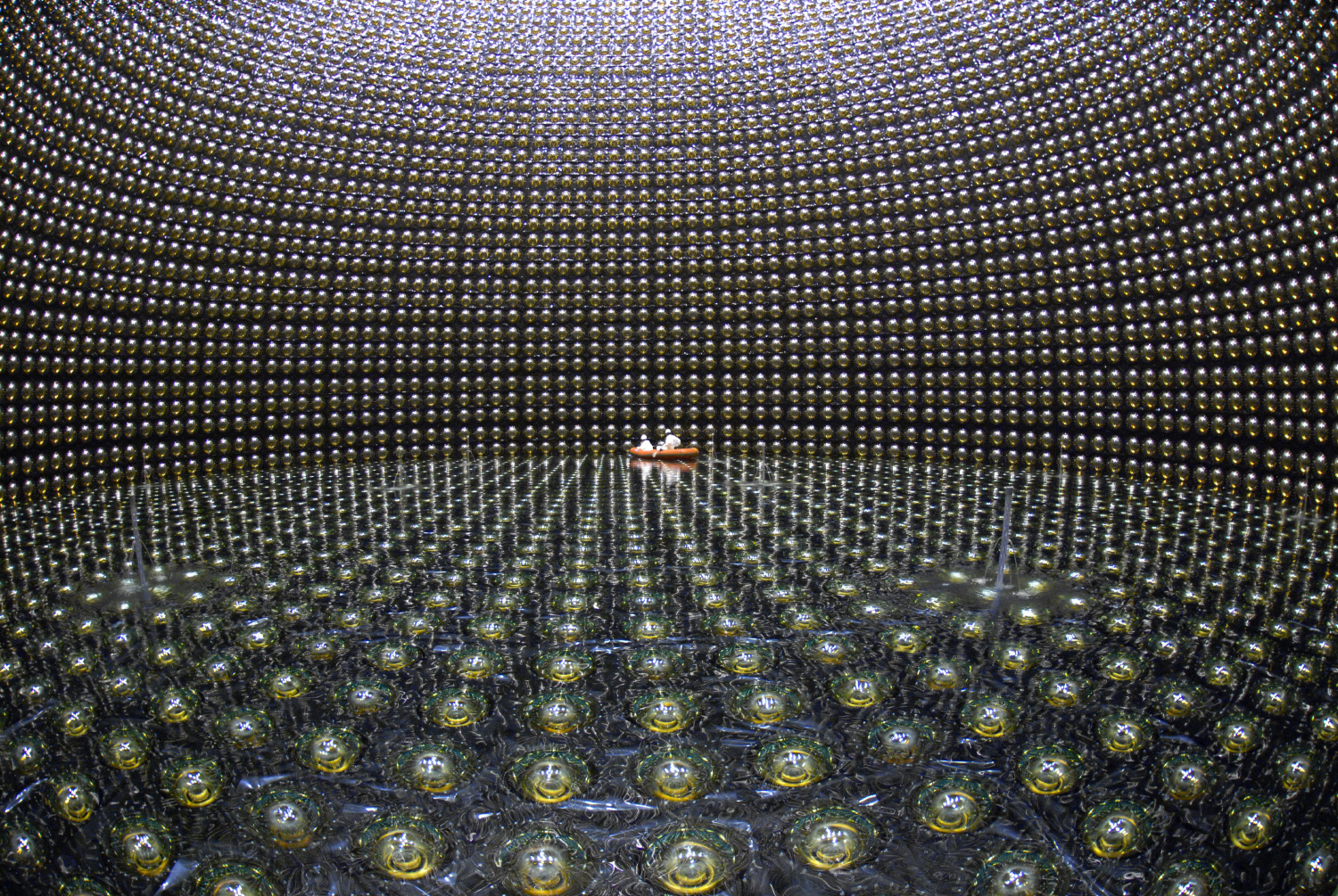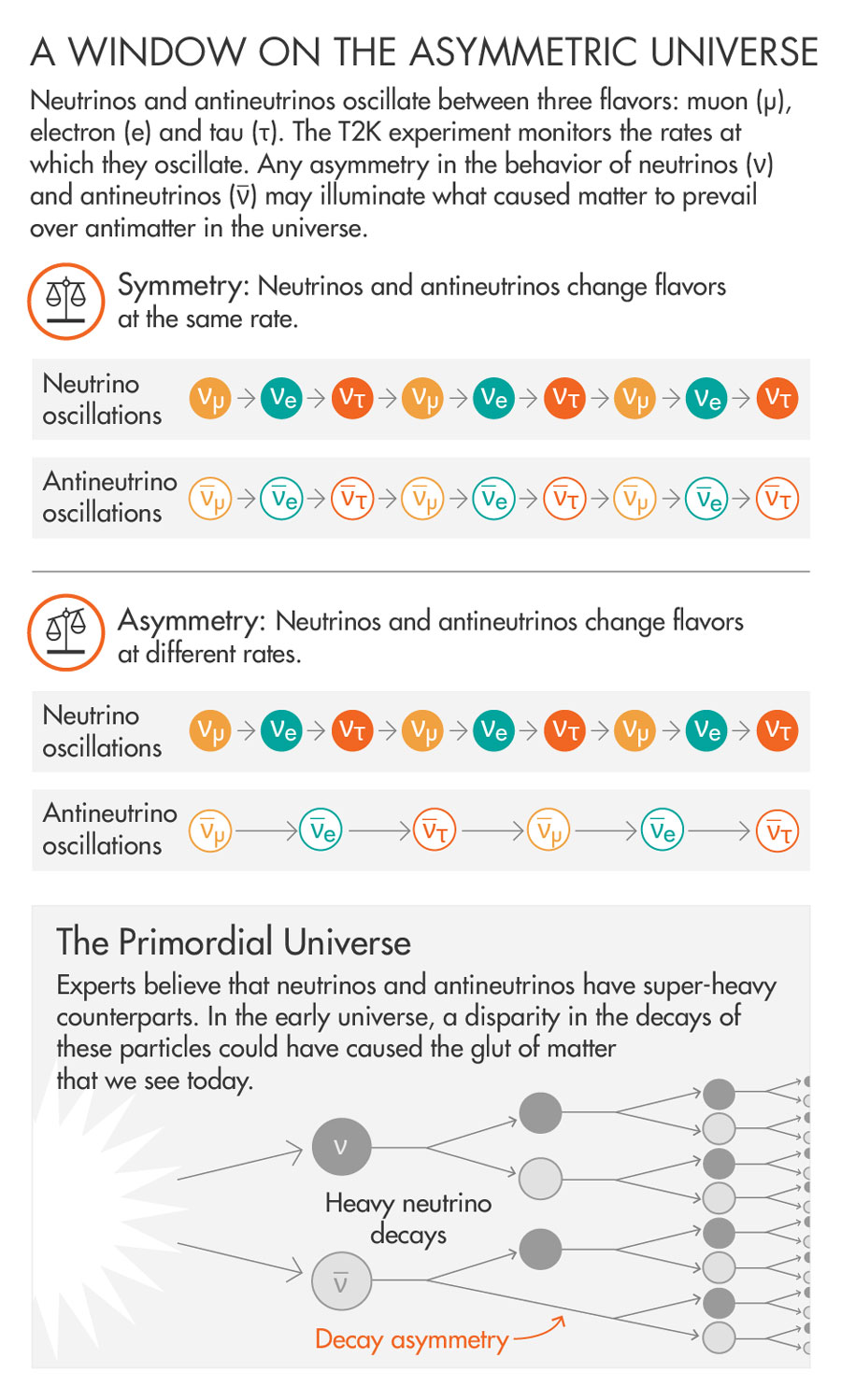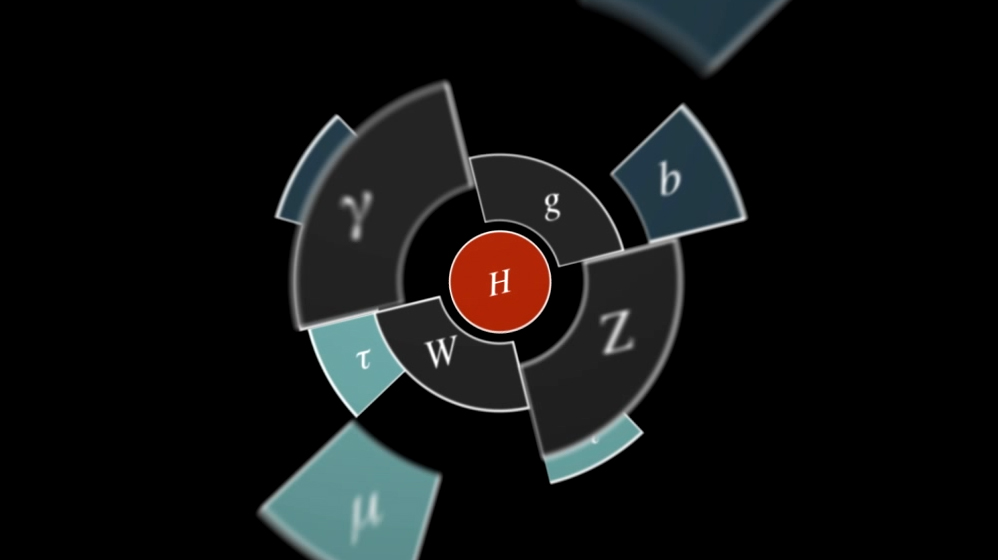Neutrinos Hint of Matter-Antimatter Rift

Olena Shmahalo/Quanta Magazine
Introduction
In the same underground observatory in Japan where, 18 years ago, neutrinos were first seen oscillating from one “flavor” to another — a landmark discovery that earned two physicists the 2015 Nobel Prize — a tiny anomaly has begun to surface in the neutrinos’ oscillations that could herald an answer to one of the biggest mysteries in physics: why matter dominates over antimatter in the universe.
The anomaly, detected by the T2K experiment, is not yet pronounced enough to be sure of, but it and the findings of two related experiments “are all pointing in the same direction,” said Hirohisa Tanaka of the University of Toronto, a member of the T2K team who presented the result to a packed audience in London earlier this month.
“A full proof will take more time,” said Werner Rodejohann, a neutrino specialist at the Max Planck Institute for Nuclear Physics in Heidelberg who was not involved in the experiments, “but my and many others’ feeling is that there is something real here.”
The long-standing puzzle to be solved is why we and everything we see is matter-made. More to the point, why does anything — matter or antimatter — exist at all? The reigning laws of particle physics, known as the Standard Model, treat matter and antimatter nearly equivalently, respecting (with one known exception) so-called charge-parity, or “CP,” symmetry: For every particle decay that produces, say, a negatively charged electron, the mirror-image decay yielding a positively charged antielectron occurs at the same rate. But this cannot be the whole story. If equal amounts of matter and antimatter were produced during the Big Bang, equal amounts should have existed shortly thereafter. And since matter and antimatter annihilate upon contact, such a situation would have led to the wholesale destruction of both, resulting in an empty cosmos.
Somehow, significantly more matter than antimatter must have been created, such that a matter surplus survived the annihilation and now holds sway. The question is, what CP-violating process beyond the Standard Model favored the production of matter over antimatter?
Many physicists suspect that the answer lies with neutrinos — ultra-elusive, omnipresent particles that pass unfelt through your body by the trillions each second.
To that end, starting in 2010, scientists with the T2K experiment generated beams of neutrinos or antineutrinos in Tokai, Japan, and aimed them toward the Super-Kamiokande neutrino observatory, a sensor-lined tank of 50,000 tons of pure water located nearly 200 miles away in Kamioka. Occasionally, these ghostly particles interacted with atoms inside the water tank, generating detectable flashes of radiation. Detecting a difference in the behavior of the neutrinos and antineutrinos would provide an important clue about the preponderance of matter over antimatter, perhaps opening up a route beyond the Standard Model to a more complete theory of nature. Already, the strange properties of neutrinos provide a possible outline of that fuller story.

At the Super-Kamiokande observatory in Kamioka, Japan — shown here when it was being filled with water in 2006 — neutrinos interact with atoms inside the water, generating flashes of radiation that are picked up by the surrounding sensors and analyzed to determine the neutrinos’ flavors.
Kamioka Observatory, ICRR (Institute for Cosmic Ray Research), The University of Tokyo
Primordial Neutrinos
The 1998 discovery that neutrinos switch flavors on the fly “may change our most fundamental theories,” President Bill Clinton said at the time, “from the nature of the smallest subatomic particles to how the universe itself works.”
Neutrino oscillations defied the Standard Model’s prediction that the particles are massless, like photons. In order for neutrinos to oscillate, each of their three possible flavors (electron, muon and tau) must be a quantum-mechanical mixture, or “superposition,” of three possible masses. Quantum superpositions evolve over time. So a neutrino might start out with its three mass components giving it pure muon flavor, but as the components evolve at different rates, electron flavor gradually enters the mixture, and the neutrino will have some probability of being measured as an electron neutrino.
There’s no mechanism within the Standard Model by which neutrinos might acquire their tiny, nonzero masses. Also unknown is why all neutrinos are observed to be “left-handed,” spinning clockwise with respect to their direction of motion, while all antineutrinos are right-handed, spinning counterclockwise.
Experts overwhelmingly favor a double-duty explanation of neutrino mass and single-handedness called the “seesaw mechanism,” whereby the known, lightweight, left-handed neutrinos have much heavier right-handed counterparts, and the known antineutrinos likewise have superheavy left-handed counterparts (the light and heavy masses are inversely related, like two sides of a seesaw). For this seesaw explanation to work, the neutrinos and antineutrinos on each side of the seesaw must actually be the same particle, except for their opposite handedness. Numerous experiments are now hunting for an extremely rare radioactive decay that would confirm this “Majorana” nature of neutrinos, thereby shoring up the logic of the seesaw mechanism.
If the theory is correct, then the heavy neutrinos and antineutrinos would have populated the hot young universe, when there was enough energy to beget beastly particles. They would have since decayed. Physicists wonder: Might their decays have produced the matter-antimatter asymmetry? This is the question to which an answer may be emerging — and much sooner than expected.
Tilted Seesaw
There’s good reason to think that neutrinos violate CP symmetry. The one established instance of CP violation in the laws of physics arises among the quarks — the building blocks of protons and neutrons — whose flavor mixing is described by a mathematical matrix similar to the one for neutrino mixing. In the quark case, though, the value of a numerical factor in the matrix that creates a disparity between quarks and antiquarks is very small. Quarks and antiquarks behave far too symmetrically to account for the universe’s matter-antimatter imbalance.


Lucy Reading-Ikkanda for Quanta Magazine
But the neutrino mixing matrix comes equipped with its own factor by which neutrinos and antineutrinos can violate CP symmetry. (Paradoxically, they can behave differently from one another even if they are Majorana particles, identical except for their opposite handedness.) If the lightweight neutrinos and antineutrinos violate CP symmetry, then the hypothetical heavy primordial neutrinos and antineutrinos must as well, and their asymmetric decays could easily have produced the universe’s glut of matter. Discovering CP violation among the lightweight neutrinos “will boost that general framework,” said Neal Weiner, a theoretical physicist at New York University.
The question is, how large will the CP-violation factor be? “The fear was that it would be small,” said Patricia Vahle, a physicist at the College of William & Mary — so small that the current generation of experiments wouldn’t detect any difference between neutrinos’ and antineutrinos’ behavior. “But it is starting to look like maybe we will be lucky,” she said.
To search for CP violation, the T2K scientists looked for evidence that neutrinos and antineutrinos oscillated between muon and electron flavors with unequal probabilities as they traveled between Tokai and Kamioka. The amount of CP violation once again works like a seesaw, with the rate of muon-to-electron neutrino conversions on one side, and corresponding antineutrino conversions on the other. The larger the value of the factor in the matrix, the greater the seesaw’s tilt.
If the seesaw is balanced, signifying perfect CP symmetry, then (accounting for differences in the production and detection rates of neutrinos and antineutrinos) the T2K scientists would have expected to detect roughly 23 electron neutrino candidates and seven electron antineutrino candidates in Kamioka, Tanaka said. Meanwhile, if CP symmetry is “maximally” violated — the seesaw tilted fully toward more neutrino oscillations and fewer antineutrino oscillations — then 27 electron neutrinos and six electron antineutrinos should have been detected. The actual numbers were even more skewed. “What we observed are 32 electron neutrino candidates and four electron antineutrino candidates,” Tanaka said.
With so few total events, it’s too soon to know whether the apparent tilt of the seesaw, signifying a large amount of CP violation, is real or a statistical aberration. Two other new hints of CP violation, however, strengthen the case. First, the newly running NOvA experiment, which generates a beam of muon neutrinos in Illinois and measures electron neutrinos in Minnesota, found a large number of these oscillations, again suggesting that the seesaw may be tilted in favor of neutrino oscillations and away from antineutrino oscillations. Second, researchers at the Super-Kamiokande observatory detected a similar enhancement of electron neutrinos coming from Earth’s atmosphere. (T2K and NOvA both plan to submit their findings for publication later this year.)
Vahle, who presented NOvA’s new results this month in London, urged caution; even when the T2K and NOvA results are combined, their statistical significance remains at a low level known as “2 sigma,” where there’s still a 5 percent chance the apparent deviation from CP symmetry is a random fluke. The results “do give me hope that finding CP violation in neutrino oscillations won’t be as hard as many feared it would be,” she said, “but we aren’t there yet.”
If CP violation among neutrinos is real and as large as it currently seems, then the evidence will slowly strengthen in the coming years. T2K’s signal could reach 3-sigma significance by the mid-2020s. “It’s a very exciting time as we look forward to a lot more data from both experiments,” said Peter Shanahan, a NOvA co-spokesperson.
It isn’t yet known exactly how CP violation in the light neutrino oscillations would translate into CP-violating decays of the heavy set. But discovering the former would point physicists in the latter’s general direction. “If we are starting to see [CP violation] in the neutrino sector, it is certainly a critical result,” Weiner said.
This article was reprinted on Wired.com.






